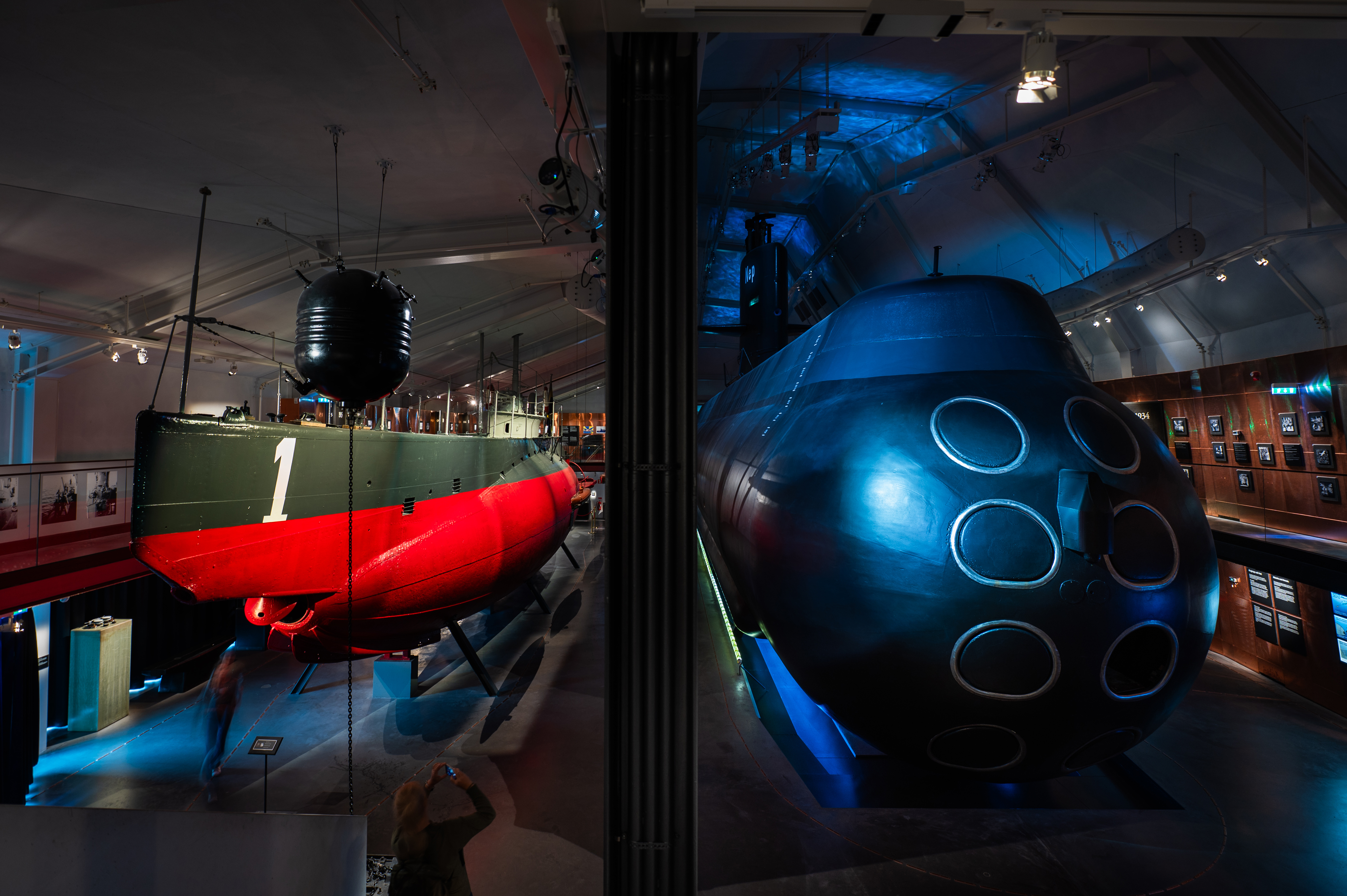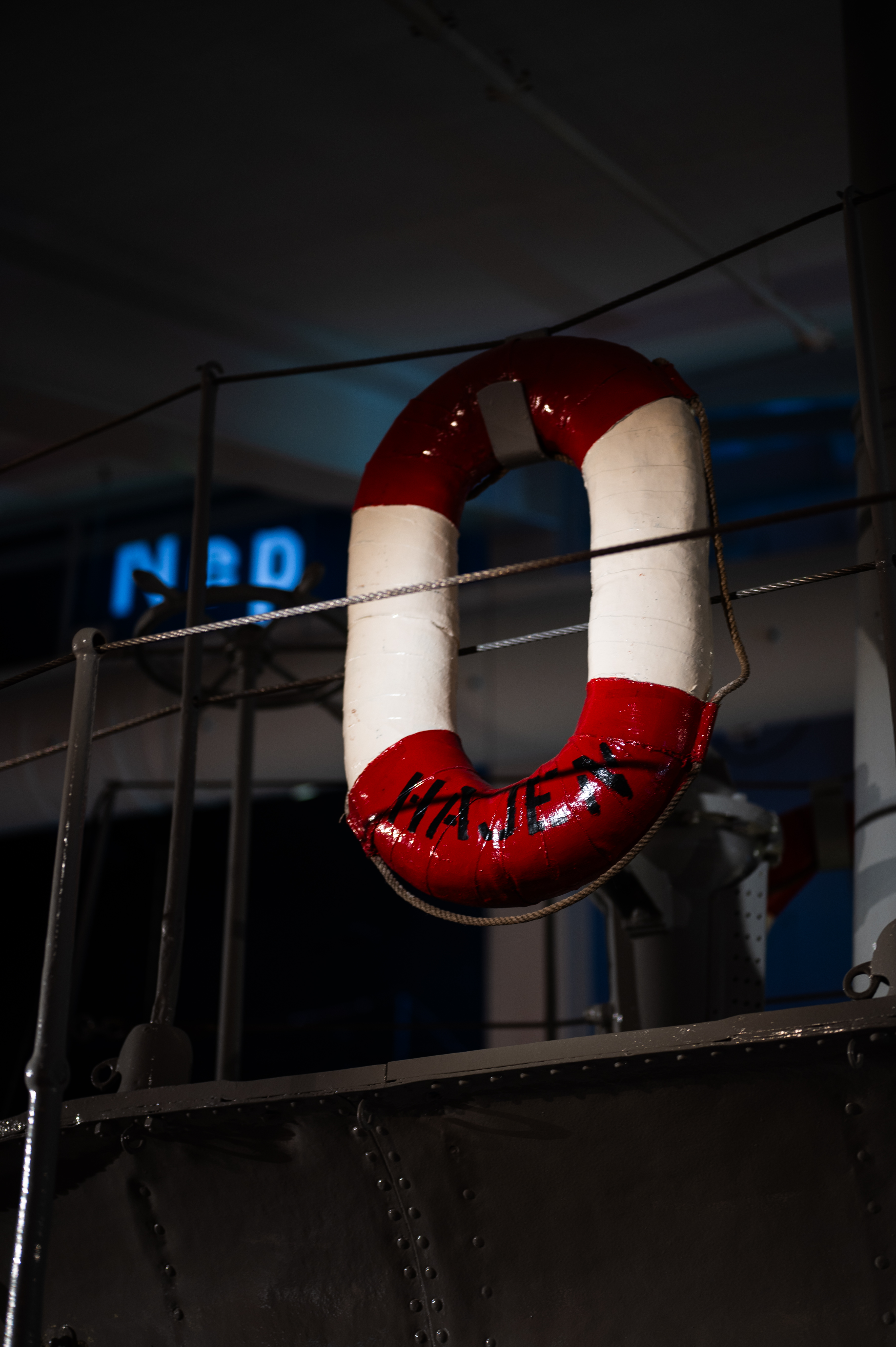
The Submarine Hall
Step into a unique environment that was once closed off and restricted. Come aboard Neptun, one of the submarines that found itself at the center of political and military tensions during the Cold War of the 1980s. You can also explore Hajen, the Swedish Navy’s very first submarine. Around these two submarines, the 110-year history of Sweden’s submarine service unfolds—told through personal stories and historic events. Numerous interactive stations make this an experience for both adults and children.
HMS Hajen (the Shark)
With only three torpedoes, a top speed just over nine knots, and no heating system, the submarine Hajen (th Shark) would hardly intimidate any navy today. But when she was launched in 1904, she was a highly modern and fearsome weapon of naval warfare.
Sweden’s First Submarine
In 1900, the U.S. Navy received its first modern submarine, designed by John Philip Holland. The Swedish government quickly recognized the great potential of underwater vessels. Naval engineer Carl Richson was given the prestigious task of designing the Swedish Navy’s very first submarine.
In 1902, the Swedish Parliament allocated 400,000 kronor to the project, and in November, King Oscar II approved the plans. Construction began at the Galärvarvet shipyard in Stockholm under strict secrecy and heavy security. The submarine, named Hajen, was launched in July 1904.

HMS Neptun
Equipped with a new cutting-edge sonar system and advanced computer technology, Neptun was a top-class submarine. In 1981, she found herself at the center of a political and military standoff when the Soviet submarine U137 ran aground in the Karlskrona archipelago.
King of the Sea
Construction of Neptun, commissioned in 1980, cost around half a billion kronor. The bow and stern sections were built at the Karlskrona shipyard, while the middle section and assembly were handled by the Kockums shipyard in Malmö.
When completed, Neptun was nearly 50 meters long and weighed about 1,000 tons. Her motto was Rex Maris, Latin for “King of the Sea”—a fitting title for a submarine with world-class onboard technology. Her sonar system was brand new and had significantly greater capabilities than previous systems used by the Swedish Navy. She was equipped with eight torpedo tubes and a fully computerized combat and fire control system.
The Cold War and U137
The 1980s were the decade of submarine hunts in Sweden, and in the fall of 1981, Neptun was thrust directly into the Cold War. On October 27, 1981, the Soviet submarine U137 ran aground at Torumskär in Gåsefjärden. The eyes of the world quickly turned to the Karlskrona archipelago, and for a week and a half, a high-stakes political standoff played out between Sweden and the Soviet Union.
The 1980s were a time of risky military maneuvering between Sweden and its powerful eastern neighbor. Neptun played an active role—according to her then commanding officer, the submarine helped prevent a Soviet tugboat from entering Swedish waters and pulling U137 free.

